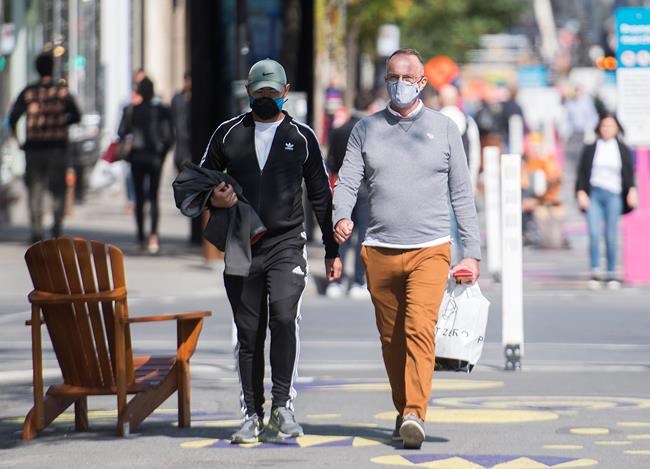
The Canadian Press
Montreal: COVID-19 appeared to be gaining steam in Canada’s two most populous provinces on Monday, prompting Quebec’s public health director to announce the beginning of a second wave.
Quebec and Ontario reported more than 1,000 cases between them, including 586 cases in Quebec, a jump of more than 100 compared with Sunday. Ontario’s numbers increased to 425 from 365 a day before.
The news prompted Dr. Horacio Arruda, Quebec’s public health director, to declare a second wave of COVID-19 had begun in the province.
“I’m very, very very worried by the situation, to the point where I consider that now we may be in a second wave, we’re in a second wave at its beginning,” he told a news conference in Quebec City.
Quebec announced tighter restrictions on public and private indoor gatherings on Sunday as it raised the alert level for several regions of the province, including Montreal and Quebec City.
But Arruda said the situation was serious all over the province, and that the population needs to respect gathering limits and health guidelines in order to limit cases.
“This second wave, we can transform it into a smaller wave than we experienced before, but if we don’t make the effort, it can be even bigger than the first,” he said.
In Ontario, Premier Doug Ford said his government would release its plan to deal with a second wave of COVID-19 on Tuesday.
Health Minister Christine Elliott added the response to the second wave could be more complicated due to flu season and the need to address the province’s surgery backlog.
In Montreal, which is Canada’s hardest-hit city, public health director Mylene Drouin said all COVID-19 indicators are worsening, suggesting the beginning of a second wave.
In Quebec and in Ontario, the jump in new cases is being driven by people under the age of 40, who Drouin said are less likely to get seriously ill from COVID-19 but who can still transmit the virus to others who are more vulnerable.
The people becoming infected “are workers, those are the ones who bring the virus in the workplace, in elder homes, schools or kindergarten, so we have to be vigilant at this time,” she told a news conference.
Authorities continued to report COVID-19 outbreaks across the country on Monday, including in schools, workplaces and on the main campus of the University of Alberta, which prompted officials there to suspend varsity athletics for 14 days.
A statement from the University of Alberta said five members of the men’s residence of St. Joseph’s College had tested positive for the novel coronavirus and were isolating.












